Improve Your Finger Circulation For Climbing
Do you ever wonder why it is so hard to keep your fingers warm when climbing? Are you interested in strategies to keep the circulation flowing while you climb? Well, this article will go in-depth into several ways how to keep the blood flowing and will use a case study of a climber with decreased finger circulation to illustrate the point.
Climber Case Example
I saw a 30-year-old trad climber who kept injuring multiple pulleys in his fingers. He reported that he mainly climbed outdoors and in cold climates. After looking at the tissue temperature of his fingers, all the way from zone six down to zone one, it was observed that their temperatures were 92, 92, 91, 89, 77, and 75 degrees, respectively. Which basically means, he had a greater than 6-degree difference between zones six and one and a greater than 3-degree difference between zones three and one. In such a case, our priority is to improve finger blood flow and warmth while climbing and warming up. See below for how I tested his circulation.
We can think about various ways to achieve our intended outcome as we go through this process. The image below depicts several external heating methods, such as a heated chalk bag (example 1), a heated mechanical hand warmer (example 2), and a stationary heating device (example 3).
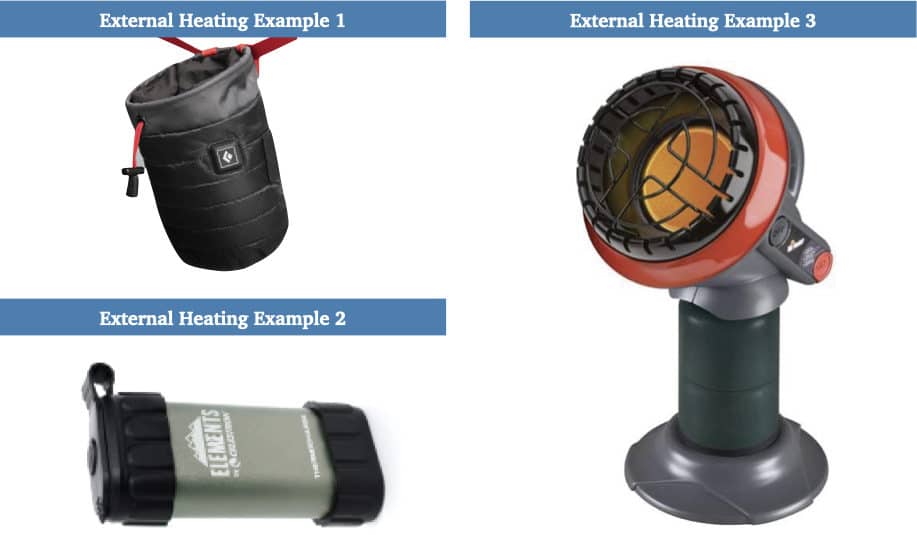
There are many ways to improve internal heating as well. For example, you can perform 5 to 10 minutes of some form of aerobic exercise, wear warm clothes, fuel your body with nutrition, or perform tendon glides that glide the tendons underneath the pulleys. You can also go through finger-intrinsic exercises since the finger intrinsics—the interossei and lumbricals— have their muscle bellies in the hand, which can also generate warmth. Specifically for the pulleys, a research study by Schweizer and colleagues (summarized in the image below) identified that a warm-up of 100 climbing moves of increasing intensity increases the amount of physiologic bowstringing at the A2 pulley. Furthermore, after 100 moves, the millimeters of bowstringing plateaus.
| Ways to Increase Finger Circulation |
|---|
| Perform 5–10 minutes of aerobic exercise to elevate your deep-muscle temperature |
| Wear warm clothes if needed (hat, mittens, down pants and jacket) |
| Fuel your body with nutrition |
| Perform tendon glides |
| Perform finger intrinsic exercises |
| A warm-up of 100 individual climbing moves of increasing intensity increases the amount of physiologic bowstringing of the A2 pulley |
Exercises
Here is an example of how you can use the intrinsic muscles to increase blood flow to the palm. If you recall, the climber we discussed earlier had issues between zones two and one. Here’s a simple exercise to target and warm up those muscles before climbing: Stand with your elbows bent at your sides with your palms facing the ground. Spread your fingers as wide as possible and then squeeze them back in. Focus on putting extra effort into the end of the range of motion. Then, drop down into a climbing position as shown below and bring your arms up overhead into almost a double capstone. Perform the same finger motions from that position. Your fingers can be straight or bent during this exercise. A rubber band will be helpful if you feel you need more resistance.
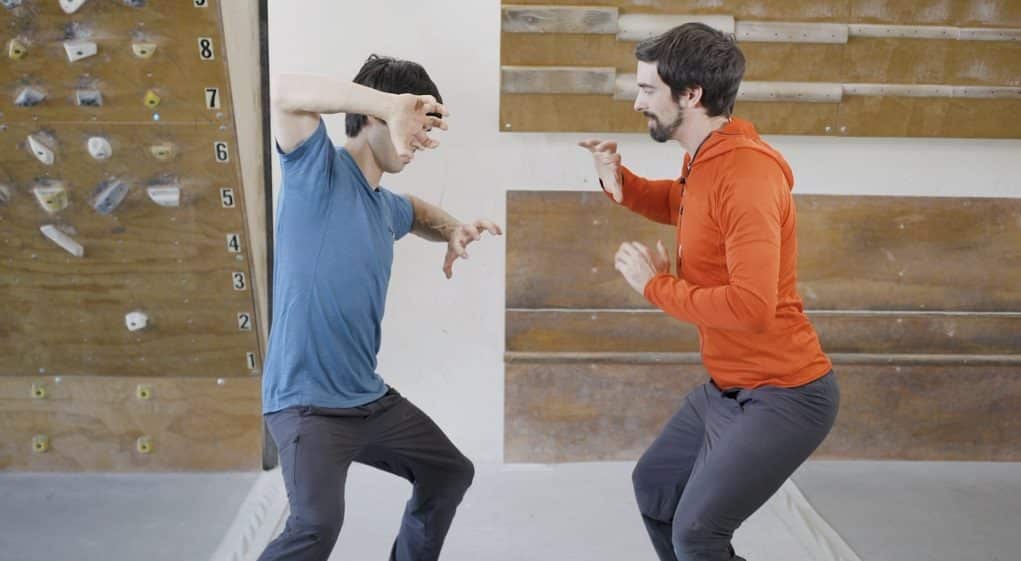
Warming up both external and internal factors is extremely important for this climber because his repeated pulley injuries are caused by a lack of blood flow to that region and insufficient warming up. Steve Bechtel, climbing performance coach, author, and climbing expert, recommends several ways that climbers can warm-up:
“Our circulation system is very effective. If the body can reach a place of feeling very warm, that warmth will extend into the extremities. One of the things that I’ve adopted in the last couple of years with this in mind is to wear a down jacket or insulated pants even if I’m feeling pretty warm. This helps me maintain as high of a body temperature as possible.”
“If it’s especially cold outside and you find yourself struggling to climb properly, one of the things you can do is perform a nearby climb that’s quite easy. For example, say your project is a 5.12; you walk over and do a 5.9 in between. The 5.9s are not difficult enough to fatigue you and do not make you work very hard. However, they get the blood flowing into those extremities. Then you can come down and take your rest, but you add those extra 5 to 8 minutes of general, easy climbing activities to keep the fingers warm.
“Another effective tool to use is a portable hangboard. You can hang it on the branch of a tree right by the crag and do a few partial pull-ups or similar exercises just to keep the hands warm. The other point to note is to wear thick and warm gloves.
“General warmth is the biggest thing you can do to stay ready to act. You can usually rest 30 to 45 minutes between hard pulls on those fingers without increasing your risk of injury as long as you stay warm. However, if your core temperature drops off, forget it. Your fingers are going to be tired and/or cold, increasing your chance of injury.”
So, there are many methods available to warm up and improve blood flow to our fingers. We can go through mobility flossing or use finger rollers, acupressure rings, or even just a brush to increase the vascularity down to the fingers. Here is an overview of each of these techniques.
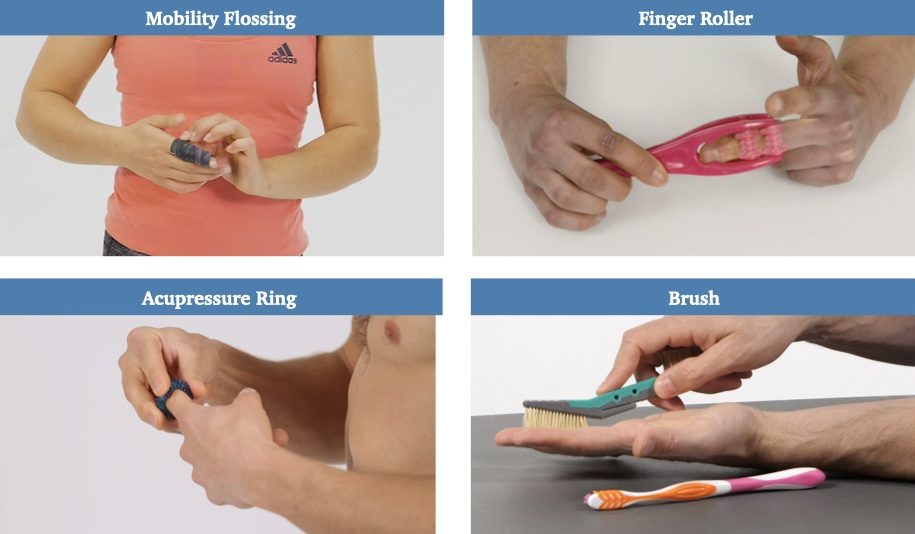
Slide an acupressure ring back and forth on your finger while pressing gently into the ring,
or try using a finger roller device to provide a deeper massage and increase circulation.
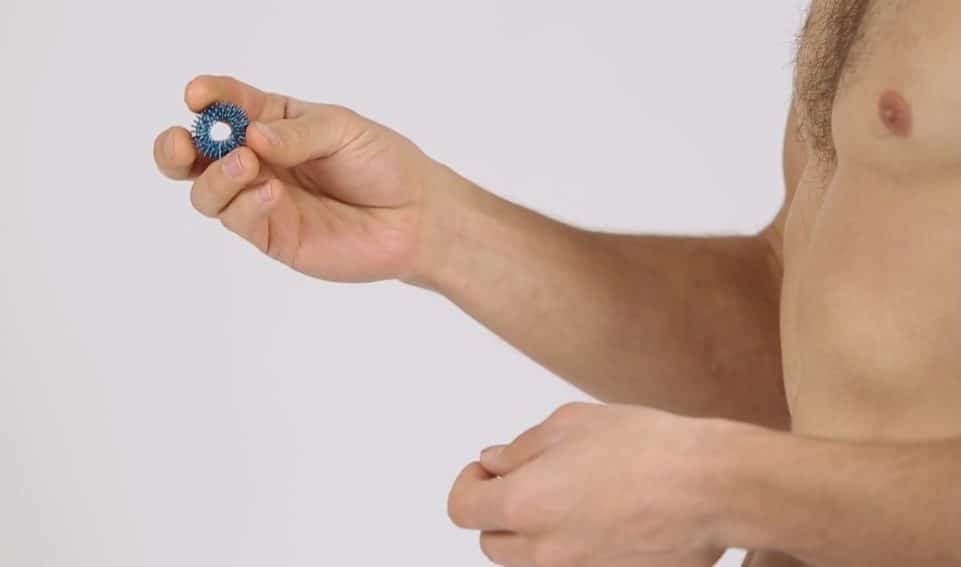
Finger Rolling: You can also make a fist with your opposite hand, apply lotion to your finger, and slide your injured finger in and out of your fist. It may be wise to perform this technique in the privacy of your own home. This technique increases circulation to the fingers. The fingers are far from the heart, and their ligaments lack adequate blood supply. It is important to increase the amount of blood to the finger to improve healing time.
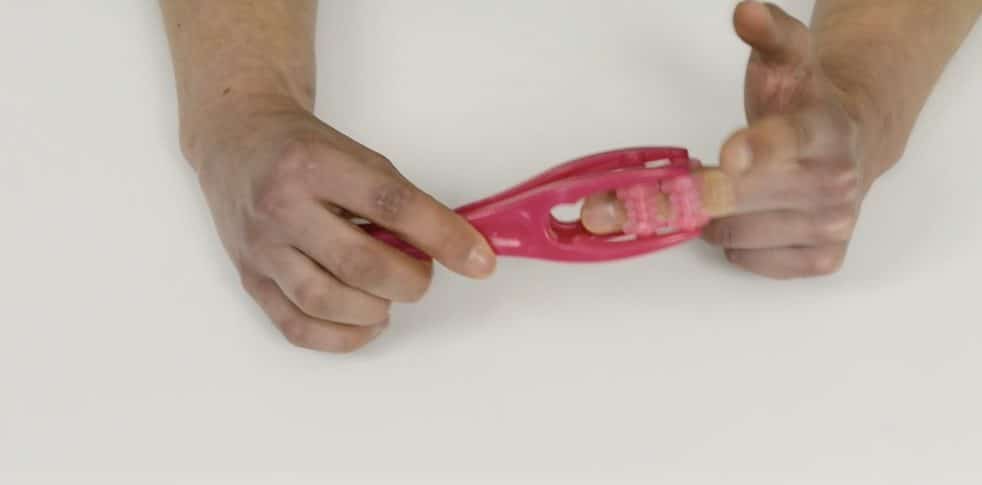
Mobility Flossing: Use a thick resistance band, voodoo floss, or rock floss. Cut the band 1.5 cm wide and 50 cm long. Grab the band, overlapping by one half with up to 50% tension from the tip of your finger to the base. Perform one minute of finger flexion exercises in the open kinetic chain. Then perform one minute of finger flexion exercises in the closed kinetic chain. Remove the band at any time if your finger goes numb or loses color.
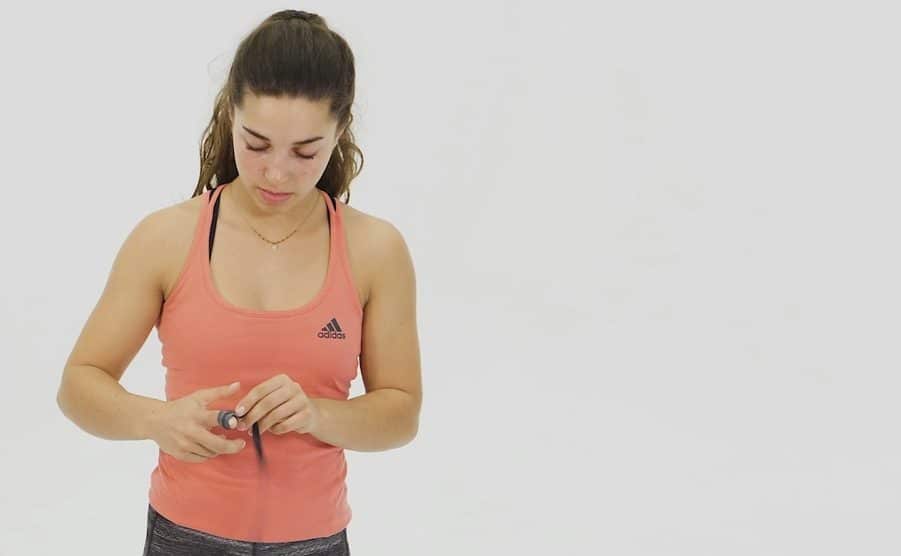
Finger Brushing: Take your brush and gently brush the front of your finger. Move up and down the proximal, middle, and distal phalanx. Brush the sides as well as the back of the finger. To increase the intensity, you can use a toothbrush, brushing on every side of the finger to increase vascularity.
Courses for Medical Providers and Coaches
Want to learn more ways to assess, diagnose and treat climbing shoulder and neck injuries? Check out the online course below to expand your knowledge and skillset in the management of rock climbing injuries. Click the course to learn more!
About The Author

Jared Vagy is a doctor of physical therapy who specializes in treating climbing injuries. He is the author of the Amazon #1 best-seller “Climb Injury-Free,” teaches Climbing Injury Professional Education for Medical Providers, and is the developer of the Rock Rehab Protocols. He has published numerous articles on injury prevention and lectures internationally. Dr. Vagy is on the teaching faculty at the University of Southern California, one of the top doctor of physical therapy programs in the USA. He is a board-certified orthopedic clinical specialist. He is passionate about climbing and enjoys working with climbers of all ability levels, ranging from novice climbers to the top professional climbers in the world.
For more education, check out the Instagram page @theclimbingdoctor
- Disclaimer – The content here is designed for information & education purposes only and the content is not intended for medical advice.

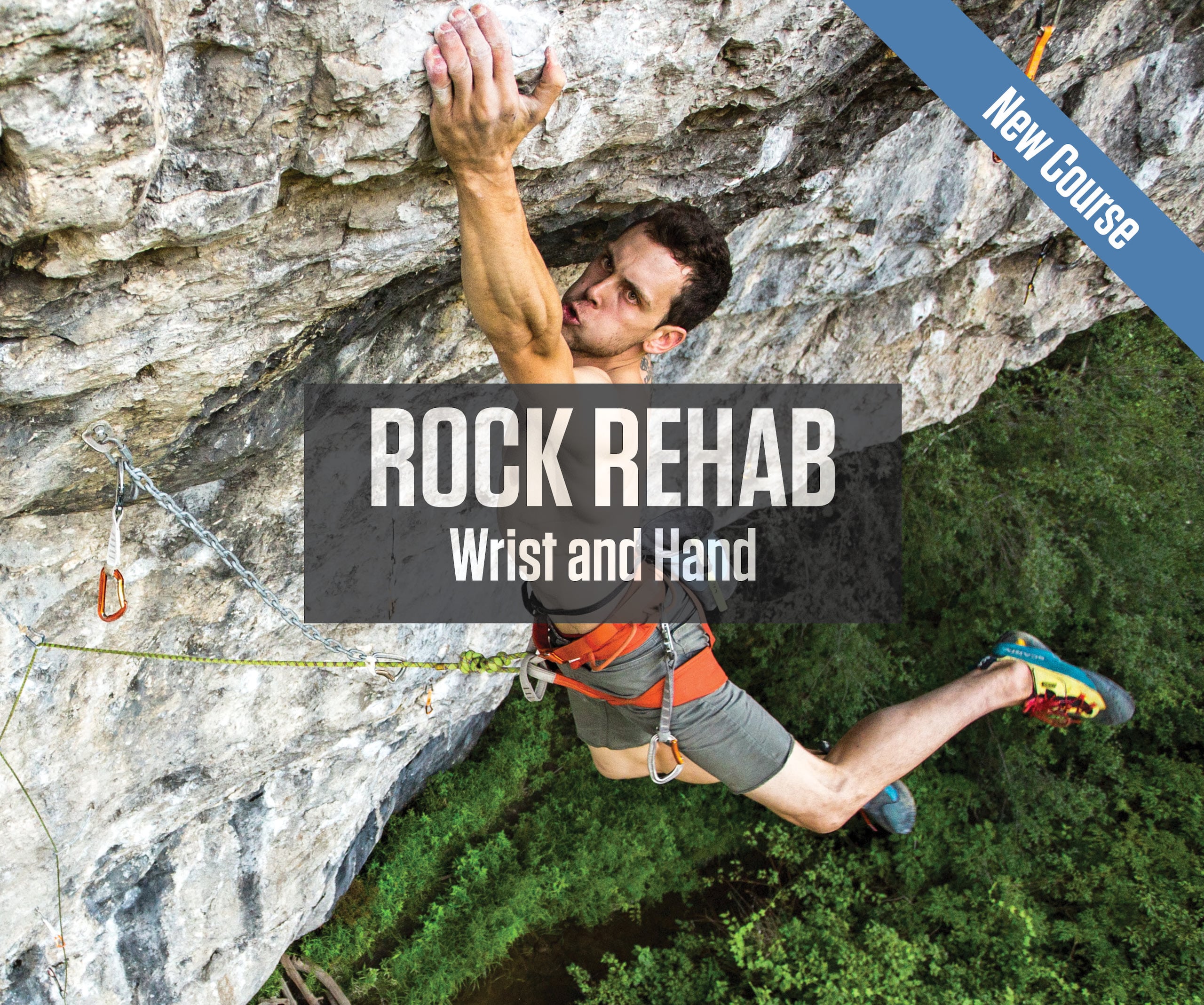
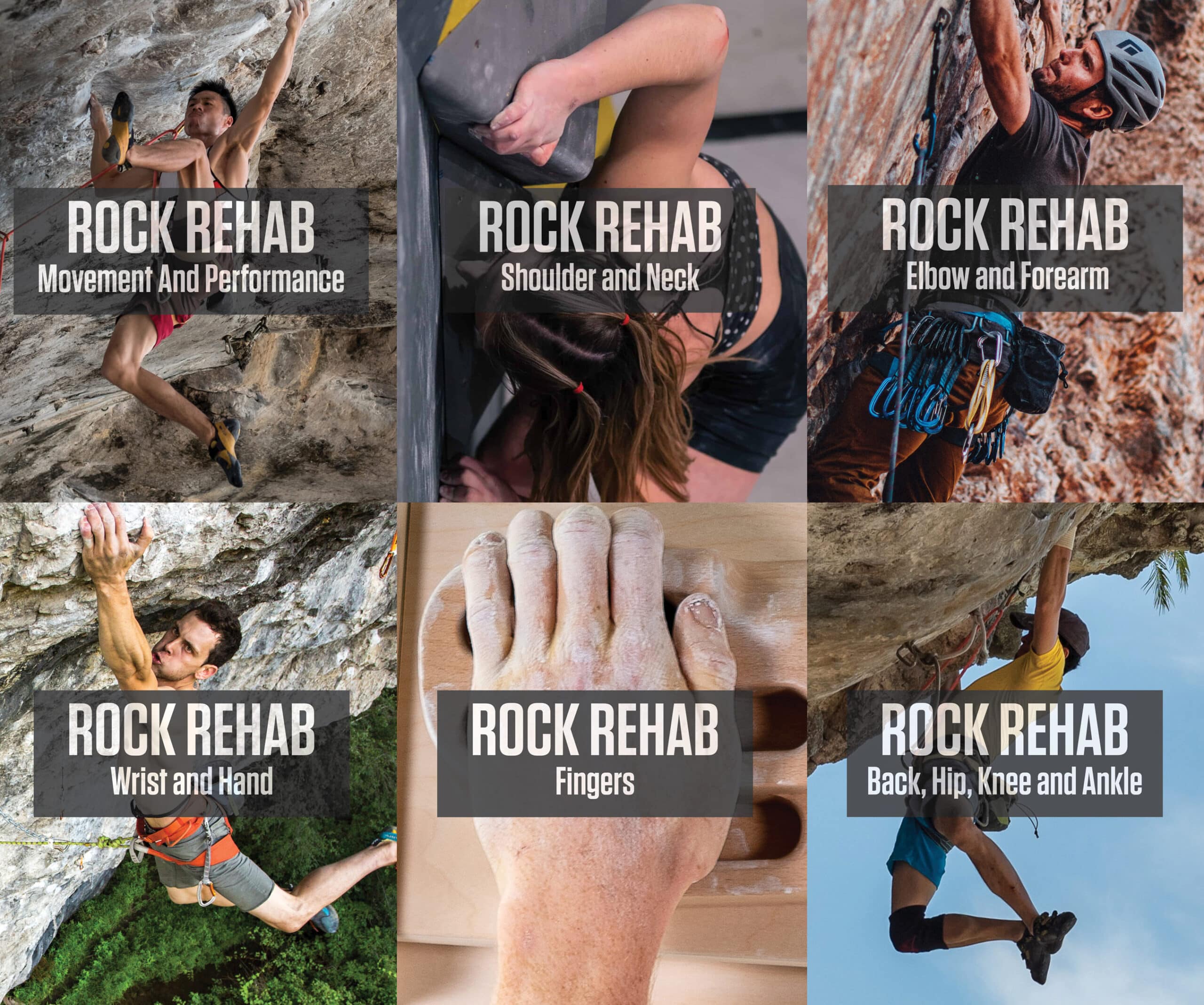

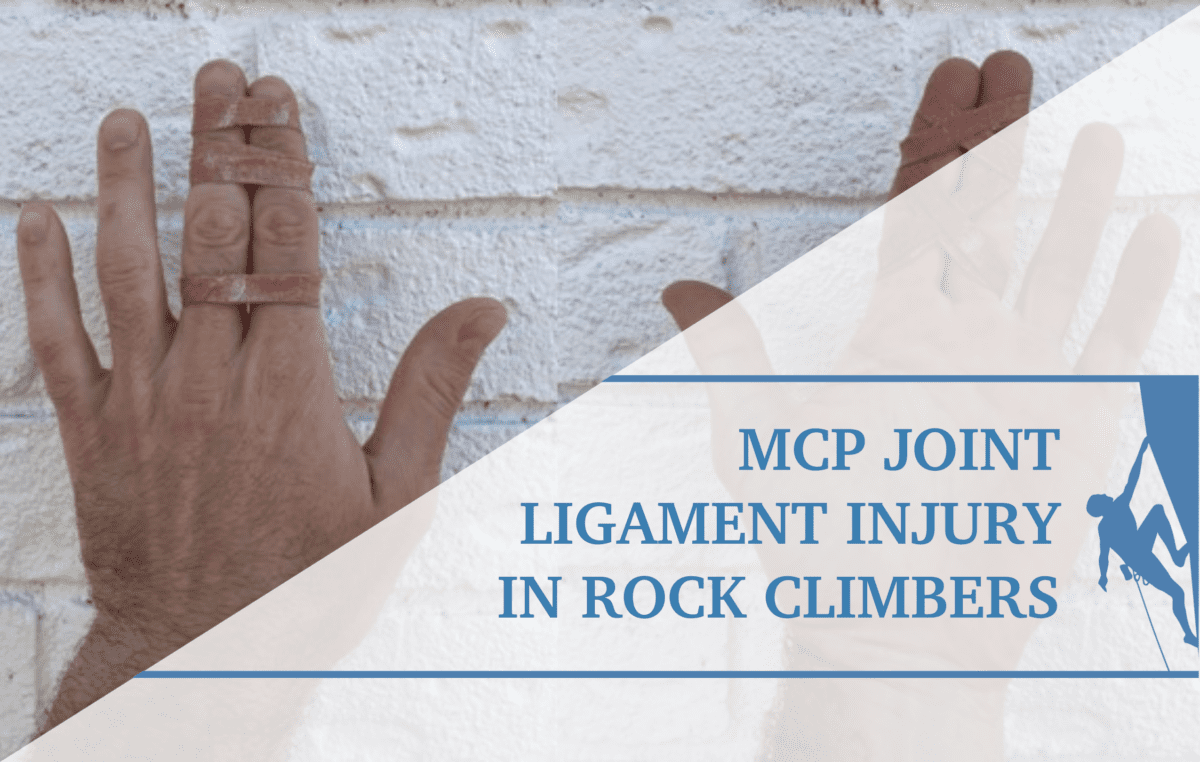
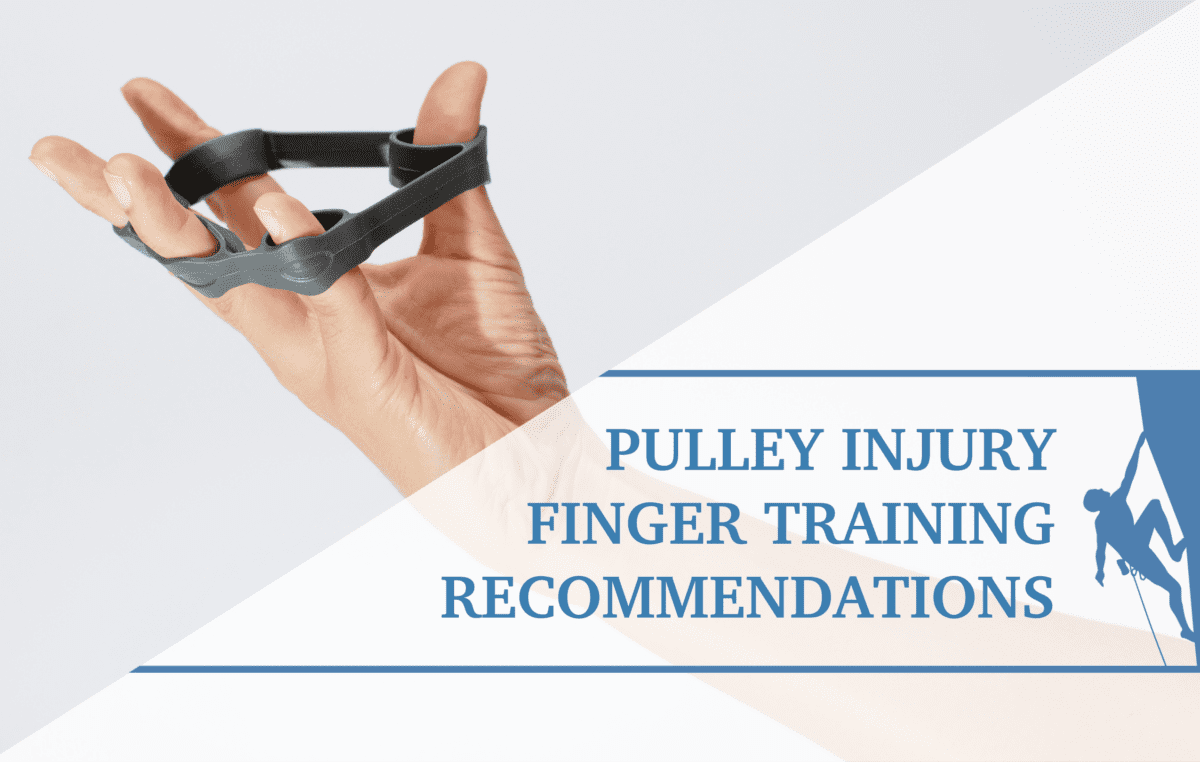

Do you have a way for injured climbers to access a specialist, such as a finger specialist? I see a registry for doctors but not patients
Yes, click on the link below and scroll to the bottom of the page “Click Here to See a List of All Accepted Members.” I cannot vouch for their experience and skill, other than that they treat climbers:
https://theclimbingdoctor.com/portfolio-items/rock-rehab-community-2-2/